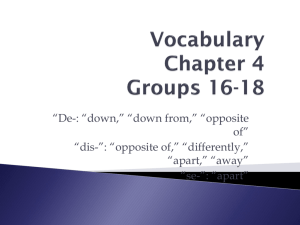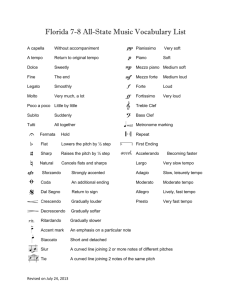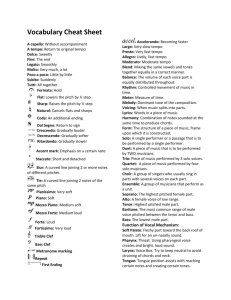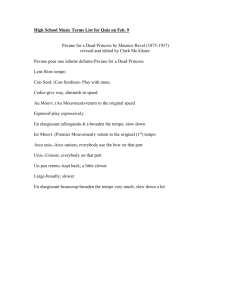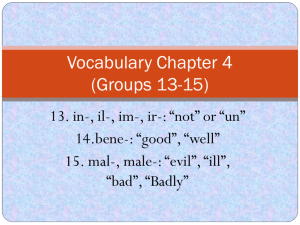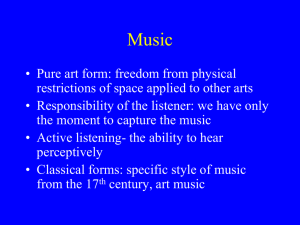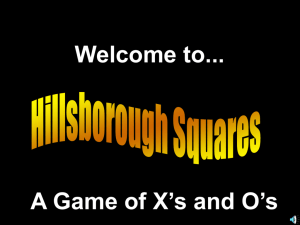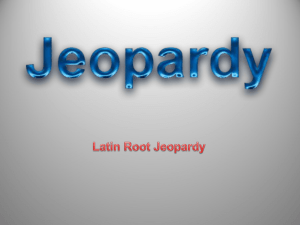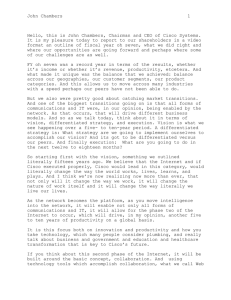Music Vocabulary music_glossary1
advertisement
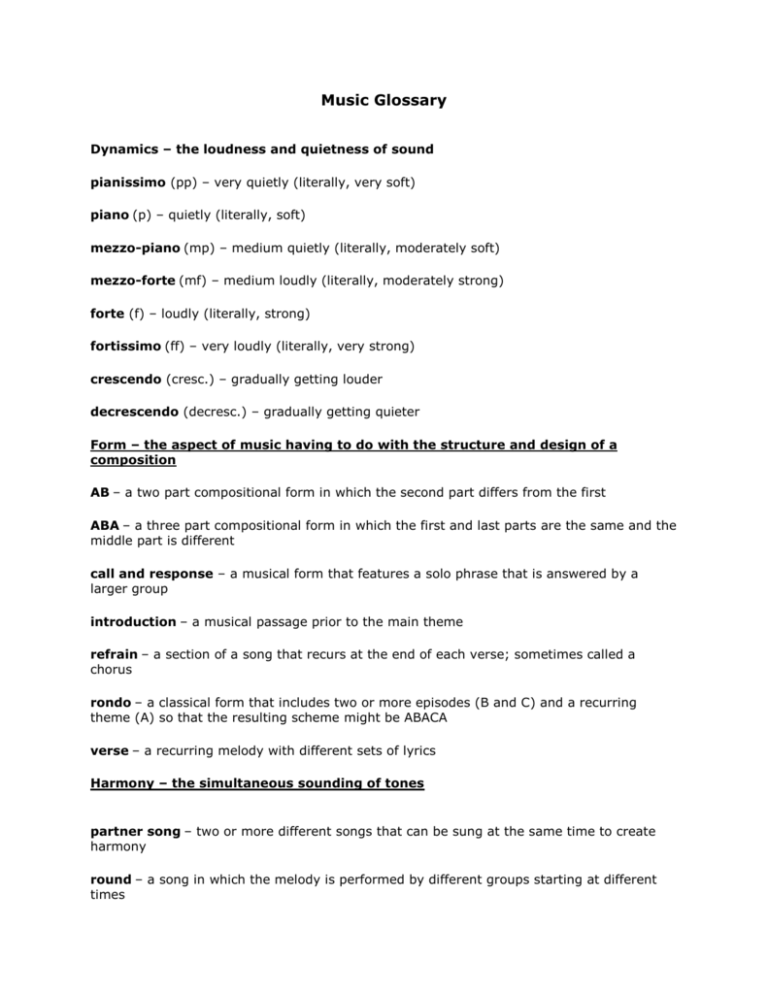
Music Glossary Dynamics – the loudness and quietness of sound pianissimo (pp) – very quietly (literally, very soft) piano (p) – quietly (literally, soft) mezzo-piano (mp) – medium quietly (literally, moderately soft) mezzo-forte (mf) – medium loudly (literally, moderately strong) forte (f) – loudly (literally, strong) fortissimo (ff) – very loudly (literally, very strong) crescendo (cresc.) – gradually getting louder decrescendo (decresc.) – gradually getting quieter Form – the aspect of music having to do with the structure and design of a composition AB – a two part compositional form in which the second part differs from the first ABA – a three part compositional form in which the first and last parts are the same and the middle part is different call and response – a musical form that features a solo phrase that is answered by a larger group introduction – a musical passage prior to the main theme refrain – a section of a song that recurs at the end of each verse; sometimes called a chorus rondo – a classical form that includes two or more episodes (B and C) and a recurring theme (A) so that the resulting scheme might be ABACA verse – a recurring melody with different sets of lyrics Harmony – the simultaneous sounding of tones partner song – two or more different songs that can be sung at the same time to create harmony round – a song in which the melody is performed by different groups starting at different times Melody – a succession of organized pitches having a definite rhythm pitch – the highness or lowness of a tone unison – identity in pitch; all singing or playing the same tone Notation – a system of visual symbols used in writing music to indicate pitch and duration bar line – a vertical line on the staff separating one measure from the next bass clef (F clef) – used to notate the lowest sounding notes; the two dots surrounding the fourth line indicate a note written on that line is "F" measure – the segment of music contained between two bar lines repeat sign – the symbols and calling for a repetition of the music enclosed by them time signature – figures written on the staff at the beginning of a composition indicating the meter, or the kind and number of beat used in a measure treble clef (G clef) – used to notate the highest sounding notes; the spiraling figure surrounding the second line indicates that a note written on that line is "G" Rhythm – the organization of musical tones with regard to their duration as distinct from their pitches beat – the basic unit of time and the underlying pulse in music; the basic unit within a measure duple – meter in which the basic unit of pulse recurs in groups of two note – a symbol used to indicate the presence of sound for a designated period of time rest – a symbol used to indicate the absence of sound for a designated period of time triple – meter in which the basic unit of pulse recurs in groups of three Tempo – the pace at which a piece of music is performed allegro – fast, lively tempo andante – literally, "at a walking pace"; moderately slow tempo, between allegretto and adagio largo – a very slow tempo, slower than adagio presto – a very fast tempo
